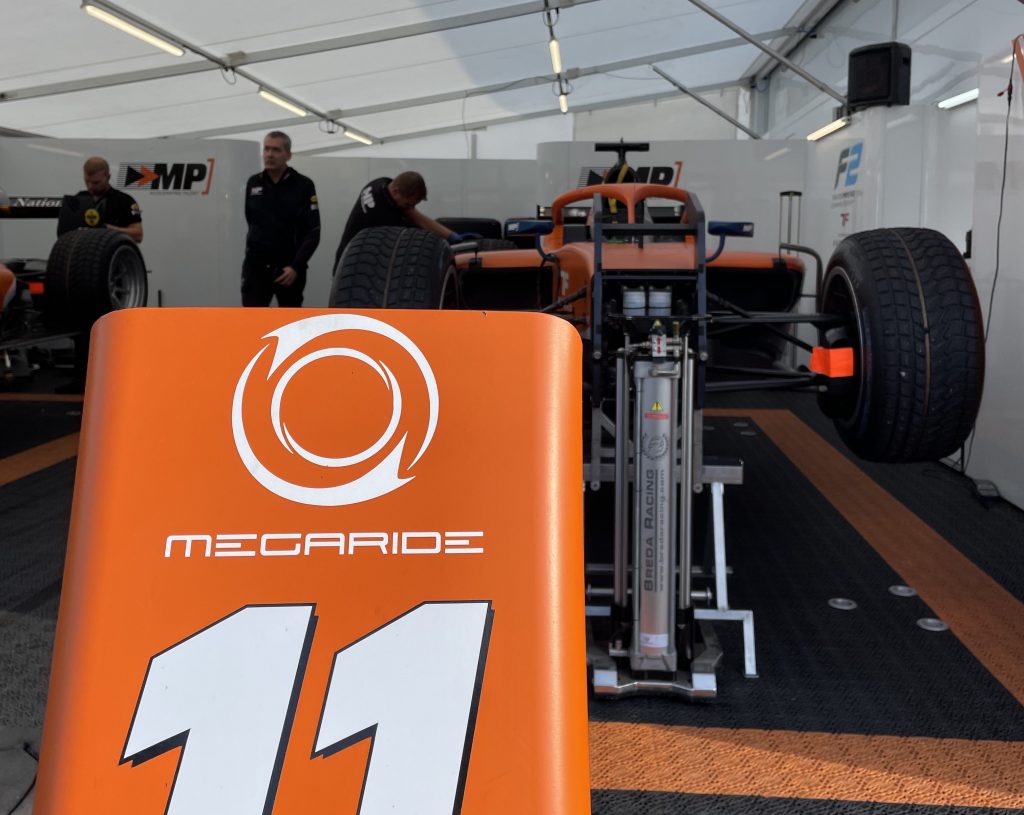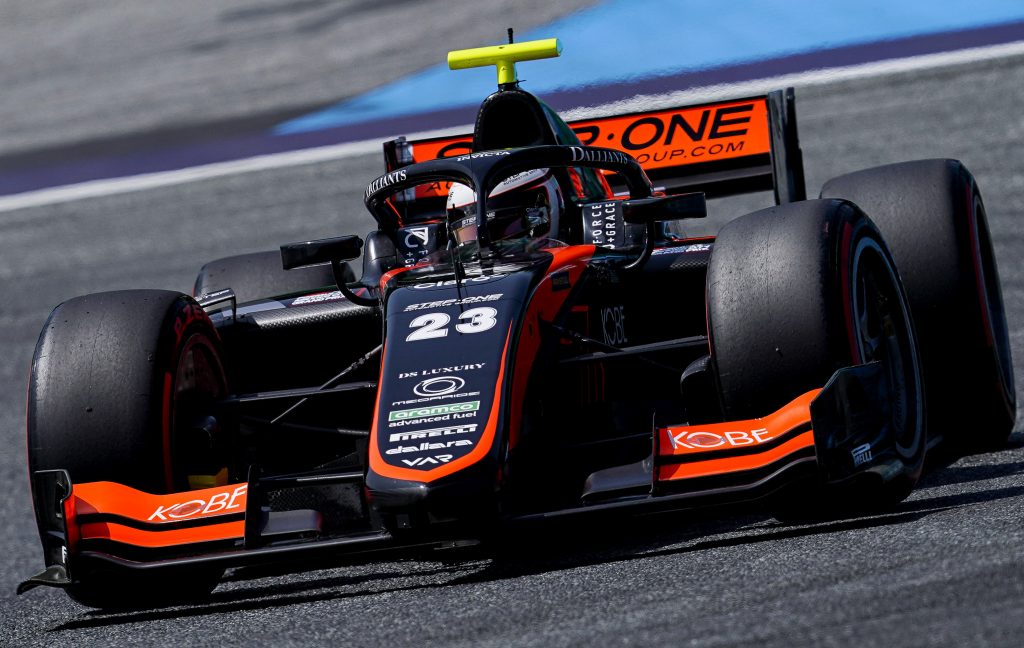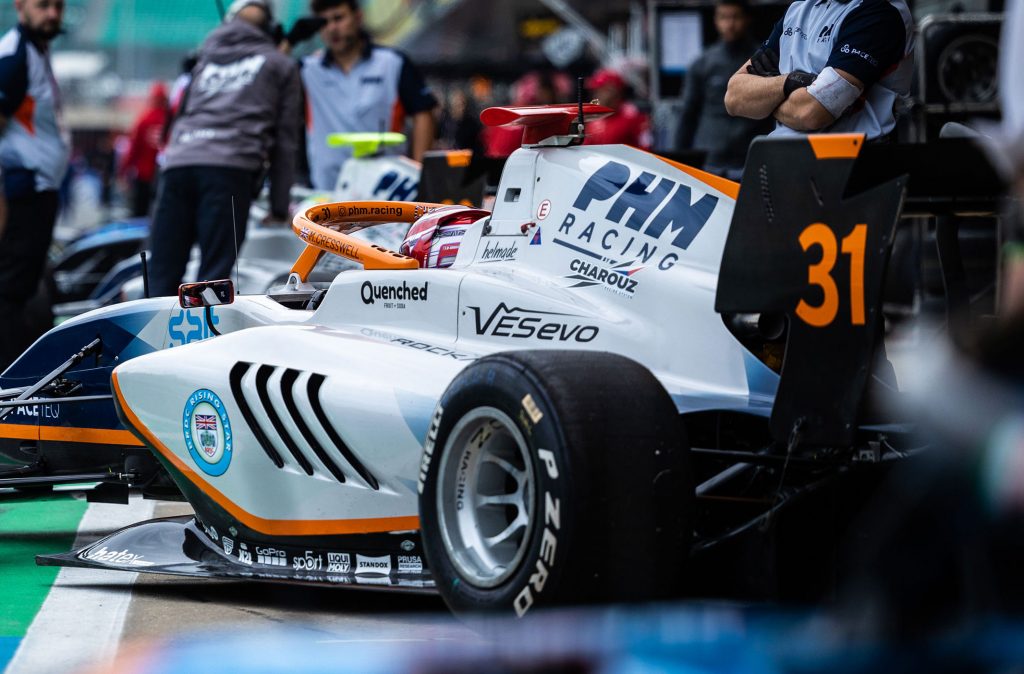Flavio Farroni explains how an in-depth knowledge of the tire can allow for an increase in performance, even in one-make series such as the F2 and F3 championships. The Neapolitan expert together with his team has made available to the teams an accurate simulation work that allows the drivers to prepare for the flying lap. In 2024, the FIA decided to ban tools in contact with tires such as the VESevo, but the law will not limit research with the introduction of other innovations.

The racing simulation world is constantly evolving. Formula 1 shows the way and the other championships try to follow, taking into account the constraints of regulation and budget.
Nowadays, telemetry has become a tool to investigate and control what happens on the track, but, in the preparatory series, chassis, aerodynamics and engine data are monitored, while fewer elements are available to analyze the tire’s behavior, another fundamental aspect in determining performance.
MegaRide technicians have understood this and for some years they have been studying an instrument: the VESevo, which allows the collection of data from the tires. The company had started collaborating with F1 teams, then bringing the knowledge acquired also to Formula 2 and Formula 3, with a predictive system on tires that is giving great results…
“I can say that we are collaborating with a third of the F2 and F3 teams – says Flavio Farroni, one of the founders of MegaRide and VESevo, who, in the meantime, is growing as an independent company, and has become the frontman of a research and development team that has its roots in the University of Naples -. This year we also started working with Van Amersfoort Racing, a team that had started the season among the outsiders of the cadet series and which, instead, has already achieved victory”.

“As usual, the collaboration starts a little quietly: while the new team implements our technologies, it does not immediately obtain results, but then it draws great benefits and we can see it in the performance of those who work with us. We have a four-year relationship with Trident: we can say that it is a super consolidated player in Formula 3 and a point of reference in the series. MP Racing last year won the Formula 2 championship using our technologies, while this season it has been preferred to put the experience gained with us for an autonomous use, with results still uncertain at the moment. There is a fourth team on the way and I can’t give details yet, but the result is that we are able to cover four of the ten teams in the category.”
In the cadet series there is an indisputable change of pace in the teams that have understood how important knowledge of the tire can be in finding performance…
“The cultural theme we are heading towards is that our survey system seems to be becoming the… telemetry of 2023. Everyone is starting to use it as a standard tool: this is a key that I like to highlight”.
How does collaboration with a new team start?
“The activity typically starts in the pre-season phase when we decide with the team on test plans during the winter tests that meet specific requirements: in fact, the vehicles must be instrumented with certain sensors, where it is allowed by the regulation, to bring home the data from the tire display”.
“Having the mathematical model, day after day, race after race, we acquire information on the profile of the circuits, i.e. the roughness of the asphalt and the environmental conditions in which we ride, which allow us to become increasingly predictive. The goal is to show the driver how to prepare for the launch lap before the push lap in qualifying”.
“It seems like a simple theme, but in reality it is the result of a complex work. To show the driver how to get to the flying lap with the best tire preparation, we analyze the temperature, wear and define what the pre-conditioning of the tire must be that allows the good driver to take pole position. This thing makes the difference between a culturally evolved team and a team that is still based on an empirical approach”.
It is usually said that tire works with an operating window, considering that there’s an ideal working temperature. In reality, the optimal grip value varies according to the roughness of the asphalt…
“Let’s say that the operating window of the Pirellis is between 80 and 100 degrees: within this macro range, the peak moves from circuit to circuit. Let me give you an example: Jeddah has dust due to the desert, so the prediction is much more complex, because the sand modifies the road profile by inserting itself in the interstices between one micro-stone and another and, in fact, increases the level of contact between the tires and the track. It is for this reason that the Arabic layout is complicated to interpret. Bahrain, on the other hand, has a very abrasive surface, but with a level of grip that the riders can manage because it’s easily predictable”.
“I mentioned two plants with opposite characteristics and in the middle there are the new F1 circuits, such as Miami, from which you don’t know what to expect: in those cases, since there is no historian from whom to draw information, the work of prediction becomes fundamental. The variables to keep an eye on are: inflation pressure, camber angles and how to condition the thermal evolution before starting the push lap”.
How do you define how to do a preparation lap?
“It gives a good combination between the simulation model of the car and that of the tire. We often see teams in F1 that have very advanced systems in analyzing the chassis and aerodynamics, but then maybe they don’t have enough information on the tire model. The most advanced and high-spending teams have understood how the game is played at a visco-elastic level, so knowing how to integrate what the tire tells them with the highly elaborate data of the frame can become an important performance factor”.

The F2 and F3 regulations introduce new clauses that prevent teams from using tire contact instruments for tire analysis…
“Yes, we read it as a clear attempt to block our VESevo. The federal provision requires us to raise the bar and look for new fields of investigation to capture the information we need to ensure the predictive service. We will have to obtain the same results with different tools: perhaps new solutions will arrive, with remote lasers or ultrasound technologies. Innovation doesn’t scare us, we’re pleased to see that the FIA has discovered that we exist: indirectly, it’s a recognition of the work we’ve done so far.”
The FIA may have intervened in the logic of cost reduction in two single-make championships, but the technical stewards know perfectly well that the research will not stop and will only change the ways in which MegaRide will be able to provide the teams with the indispensable predictive data. The challenge continues…